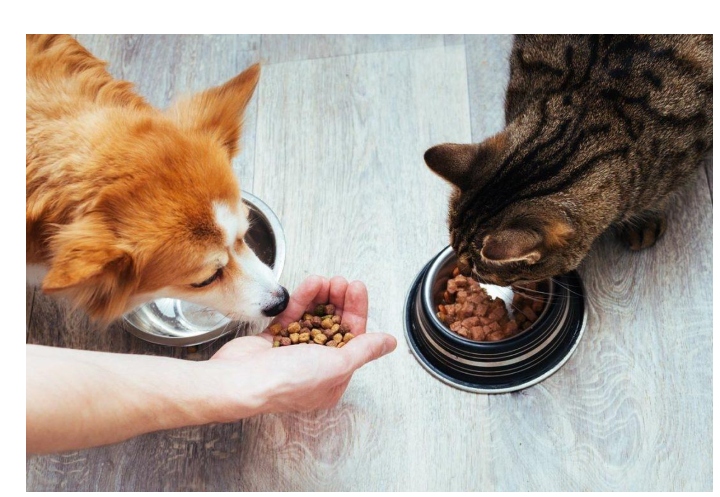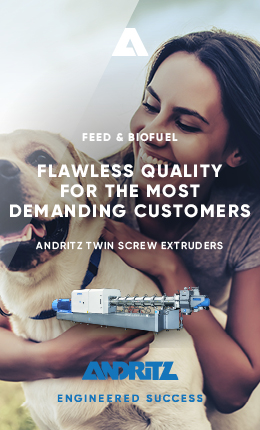Image Source: © ANASTAS_ - STOCK.ADOBE.COM 09.18.2020 By Jordan Tyler
ROCKVILLE, MD. — Private label, a focus on felines, sourcing claims and grain-inclusive formulations are among Packaged Facts' list of five key opportunities for the pet food industry heading into 2021.
The market research firm is keeping a close watch on the industry, updating its 'Pet Food in the US, 15th Edition' report to account for COVID-19 implications in June.
Overall, the pet food and treat segment is expected to continue on a growth path through the remainder of 2020, with sales projected to increase by 7% to $31 billion. This growth is expected to continue, Packaged Facts reports, at 5.5% in 2021 and 2022, followed by 5% growth in 2023 and 2024.
The outlook for discretionary pet product sales overall has also turned, with Packaged Facts projecting 8% growth to $59 billion by the end of 2020.
Pet ownership during COVID-19
Packaged Facts expects the number of pet-owning households in the United States will reach 71 million (56% of all US households) by the end of the year, growing 4% from 2019.
The market research firm pointed to pet ownership trends during the pandemic as a stronghold for the pet food and treat market. Twelve percent of adults with children under the age of 18 adopted pets because of the pandemic, compared with 8% of all adults.
Additionally, 10% of cat owners and 9% of dog owners in the United States said they adopted a pet because of COVID-19 implications, with 10% of all pet owners acquiring pets over the last three months.
Over the last year, 14% of current pet owners brought a dog into the household, while 12% added cats.
'Pet food marketers and retailers would do well to target new pet owners and secure their long-term loyalty from day one through 'puppy promotions' and new pet welcome packages,' the firm suggested.
Lower-cost private label
Although pet product purchasing sentiments remain steady among the majority of US pet owners according to a recent survey by the American Pet Products Association (APPA), there has been question of the economic impacts of the pandemic affecting pet owners' ability to continue purchasing high-priced premium pet food and treat products.
Packaged Facts suggests a shift to lower-cost, private-label brands — specifically store and house brands from retailers — occurring to provide more options to pet parents most affected by the pandemic.
According to a Packaged Facts survey fielded in April and May 2020, 47% of pet owners reported buying lower-cost store brands of pet food or treats more frequently.
In a separate survey by Packaged Facts, 44% of pet owners agreed that the quality of store brands is as good as national name brands, while 23% disagreed.
The market research firm has also based its projection for private label brand growth on market shifts seen immediately following the Great Recession, when value-conscious consumers began purchasing more private label brands.
Ingredient sourcing
Pet owners are becoming more attuned to pet food and treat labels, scanning for high-quality ingredient names and to avoiding products with ingredients they believe are bad for their pets, namely those with names that look and sound synthetic. While there is plenty of room for education in this area, this trend will continue to drive pet owners' purchasing decisions.
Packaged Facts suggests ingredient and sourcing claims such as 'fresh,' 'limited ingredient' and 'superfood' are becoming the new 'natural.' Pet foods and treats including novel and alternative proteins have also gained traction.
'In response, pet food marketers need to promote sought-after ingredients while being fully transparent, with product websites and labelling telling the full story of where the ingredients come from and how the products are made,' Packaged Facts stated. 'Looking ahead, Packaged Facts expects to see marketers and retailers of premium pet foods increasingly involved in sustainability, animal welfare, and socio-economic system initiatives.'
Grain-inclusive gains
Following the US Food and Drug Administration's (FDA) announcement of a potential link between diet and canine dilated cardiomyopathy (DCM), pet food manufacturers have put the focus back on grains, formulating grain-friendly and grain-inclusive diets for concerned pet owners. More research is needed to determine if this link is valid.
Nevertheless, ancient grains have entered the limelight, including spelt, quinoa, sorghum, amaranth, quinoa, millet, buckwheat and chia. Plant-based ingredients commonly considered as healthy human foods have also increasingly entered the pet food space, including superfood ingredients such as kale, spinach and blueberries.
'With the resolution of the FDA investigation of the DCM situation still possibly years away, marketers will need to address pet owner concerns and offer new premium options above and beyond grain-free,' Packaged Facts stated.
Cat-centric
Last but certainly not least, Packaged Facts projects the pet food and treat marketplace to shift focus toward cat products, which have historically been stuck in second place next to the dog product market.
While cat ownership has remained flat and dog ownership is on the rise, cat owners are demanding a wider variety of better and more innovative products for cats, including functional formulas, better supplemental nutrition options, more natural options and an overall more proliferated marketplace.
'More and better products and services for cats, and more marketing attention, stand to encourage cat owners to invest more heavily in the health and happiness of their purr babies and — most important of all — attract more Americans into the feline fold,' Packaged Facts stated.
Other growth factors
Above all, a common thread driving these trends is a surge in online pet food and treat sales, driven primarily by e-commerce giants Chewy and Amazon, 'whose swift advances have been more than offsetting the resultant drag on brick-and-mortar sales,' Packaged Facts said.
The market research firm expects online pet product sales to account for 27% of total sales by the end of 2020, jumping to 35% share of sales by 2024.
This, coupled with continuing premiumization, support for new formats such as fresh and frozen, and mass market proliferation, will continue to drive the pet food and treat industry forward in uncertain times.
Source: Pet Food Processing
You could be interested: Common black fly larvae added to list of alternative protein source in animal feed






























































